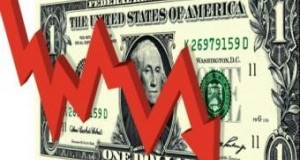The percentage of older Americans with outstanding mortgage debt has increased since the start of the housing crisis, according to a report released Wednesday by the Consumer Financial Protection Bureau (CFPB). In fact, according to the bureau, about half of retired seniors with mortgage debt pay more than 30 percent of their household income on housing costs.
Read More »Fannie Mae’s Book Declines at Annualized Rate of 2.2% in Q1
Fannie Mae’s book of business declined for the first three months of this year, ending the first quarter with a monthly compound annualized rate of -1.8 percent. Over the first quarter, the GSE’s book of business declined at a compound annualized rate of 2.2 percent. Fannie’s gross mortgage portfolio has also been on the decline over the first three months of this year, though at a much slower rate in March than in the first two months of the year.
Read More »Brakes Expected to Keep Pumping on Price Gains
After nearly two years of frenzied price appreciation, home price gains are expected to drop off, according to the latest report from Veros Real Estate Solutions, a provider of enterprise risk management, collateral valuation, and predictive analytics. However, Veros does not cast a negative outlook for the market. Rather, the firm anticipates a stable market with slow price appreciation. “The wave of appreciation may have crested, but it has been an impressive recovery in many respects,” said Eric Fox, VP of statistical an economic modeling at Veros.
Read More »Freddie Mac’s Portfolio Shrinks at Fastest Rate This Year
Freddie Mac’s mortgage portfolio has declined in each of the first three months of this year with the fastest annualized decline in March, according to the GSE’s latest monthly volume summary. Freddie’s mortgage portfolio declined at an annualized rate of 2.9 percent in March. The last time the GSE’s portfolio grew was in December, when it demonstrated an annualized growth rate of 0.4 percent.
Read More »Economists: Banks Hold $2T in Excess Reserves; Are Eager to Lend
While strict lending standards may be precluding some from the housing market, one economist insists banks want to lend. It is lackluster employment and slow household formation among Millennials that is hindering the market now, according to Maury Harris, managing director and chief U.S. economist at UBS during a discussion hosted by the National Association of Home Builders (NAHB). “Banks have over $2 trillion of excess reserves,” Harris said. “Banks would like to put that money to work and increase lending, which would help the economy.”
Read More »HARP Refinances Continue to Dwindle
Even a slight drop in mortgage rates did both bolster February refinances through the Home Affordable Refinance Program (HARP), the Federal Housing Finance Agency (FHFA) reported. Representing 21 percent of all refinances the GSEs completed in February, 26,964 HARP refinances were completed over the month, according to the FHFA's latest Refinance Report.
Read More »Spring Brings Uptick in Home Sales, But Inventory Remains Low
Following weak home sales during the first two months of the year resulting from extreme winter weather, March sales picked up 24.6 percent across the 52 metros measured in the RE/MAX National Housing Report. With sales rebounding just in time for spring homebuying season, the market continues to demonstrate its persistent trends of rising prices and low inventory.
Read More »Price Gains Wane as Inventory Ticks Up
March marked the end of a 17-month streak of double-digit annual price gains—just barely—according to real estate brokerage Redfin. Prices rose 9.9 percent over the year in March, according to Redfin’s data on 19 markets nationwide. Home sales also followed a downward trend in March, but on the bright side, inventory is beginning to grow, according to the brokerage.
Read More »Consumer Confidence Heads Toward Long-Term Norm
Consumer confidence reached a four-month high in April, according to the University of Michigan’s preliminary measure of consumer sentiment for the month. After taking a hit in March, the index rebounded to 82.6 in April, prompting one analytics firm to anticipate a possible return in consumer confidence to a long-term normal of 85. The university also measures current conditions and expectations, finding upticks in both this month.
Read More »Second-Home Mortgage Market Is Alive and Well
Since 1998, second-home mortgages have averaged about 4.76 percent of the total purchase market, but the share is rising, according to Fannie Mae. While the purchase market increased four-fold from 1998 through the bubble years, the second-home mortgage market multiplied by 15 over the same years. The second-home mortgage market did decline significantly during the housing downturn, but today, it’s alive and well.
Read More » theMReport.com Your trusted source for mortgage banking news
theMReport.com Your trusted source for mortgage banking news








